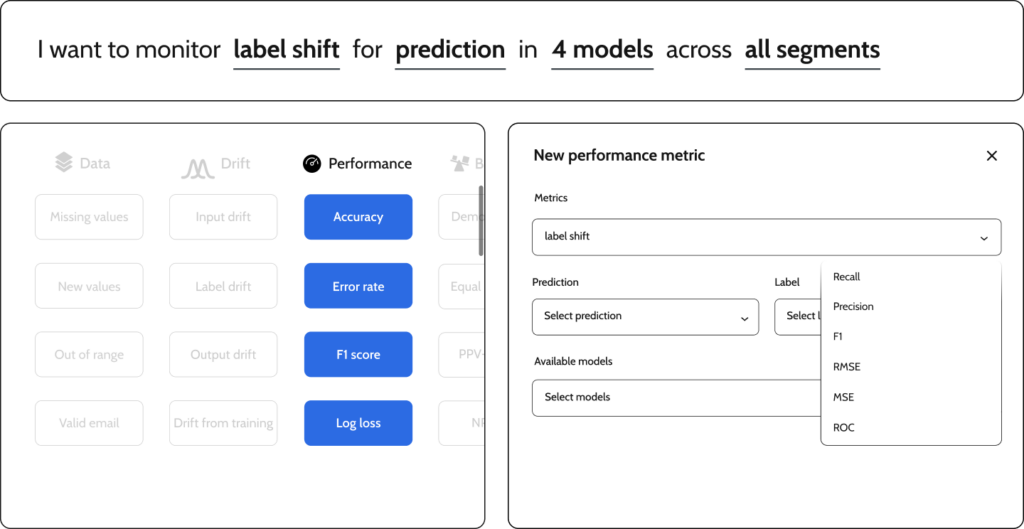
I want to monitor output drift for prediction in all LTV models across all segments
Catch changes in your model’s predictions before they disrupt outcomes. Pinpoint where real-world data diverges from expectations to act swiftly and maintain control.
I want to monitor distribution shift for prediction probability in risk model across all segments & entire set
Detect performance dips—sudden or gradual—before they impact your business. Measure what matters with tools tailored to your goals.
I want to monitor label shift for prediction in all CRO models across all segments
Detect label changes in your CRO models across all segments to ensure accuracy. Pinpoint shifts in real time and adjust to keep your AI grounded.
I want to monitor label proportion for prediction in 1 model across all segments
Prevent skewed labels from masking poor performance. Monitor distributions to catch imbalances and keep your models accurate.
No credit card required.

Easily get started with a free
community edition account.
!pip install superwise

import superwise as sw
project = sw.project("Fraud detection")
model = sw.model(project,"Customer a")
policy = sw.policy(model,drift_template)


Entire population drift – high probability of concept drift. Open incident investigation →

Segment “tablet shoppers” drifting. Split model and retrain.